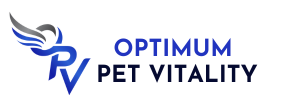Lordosis – the cause, effects, and Treatments
Lordosis, or swayback, is an inward curve or hyperextension of the spine, which leads to back pain, gait changes, potentially shoulder pain, and other issues that compromise animals’ quality of life. There are several known causes of lordosis, some that are treatable with an easy fix, some that are moderately difficult to treat, and some that we can slow the progression of.
Lordosis can be caused by a number of things – weak abdominal muscle, weakness of the shoulder girdle muscles, postural changes that can be related to the front or rear limbs, and even nail care.
Lordosis can lead to back pain, shoulder pain, gait changes, and inflammation, which can be treated symptomatically, but if we can treat the root cause we can relieve these issues without medications. Sometimes all it takes is a nail trim. Really!
Let’s get into our video…
*Pet parents, please note that this video was created for veterinary professionals. Your pet should always be examined, diagnosed, and treated by a licensed veterinary professional.
Looking at pictures of Queenie – a 16-year-old (give or take a year) lab with severe progressive lordosis – we can see her progression over the years from simple abdominal muscle weakness to abdominal muscle and shoulder girdle muscle weakness.
Treating LORDOSIS
The Assisi Loop is a safe and easy way to help with pain and inflammation and can be used several times a day by a pet parent.
Chiropractic or manual therapy can be beneficial to relieve pain and allow the spine to move better.
Laser therapy can reduce pain and inflammation and can (and in my opinion should) be used concurrently with the Assisi Loop.
Nail trims can make dramatic changes in thoracolumbar posture immediately, if the nails are long and at least partially the cause for the lordosis. When a dog’s nails hit the ground it tells their nervous system that they are walking uphill and must change their posture to accommodate.
Cat Stretches can immediately relieve discomfort and increase spinal motion to help strengthen the abdominal muscles.
Exercises that target the abdominal and shoulder-girdle muscles include goosing at the chest, flank, and or abdomen, and with patients like Queenie, flexion cookie stretches in a lateral position.
Be sure to watch the video for examples of these exercise.
She may not have normal posture, but we have greatly improved Queenie’s quality of life, taken away the pain to make her happy. Her mom is continuing to see signs of improvement!
